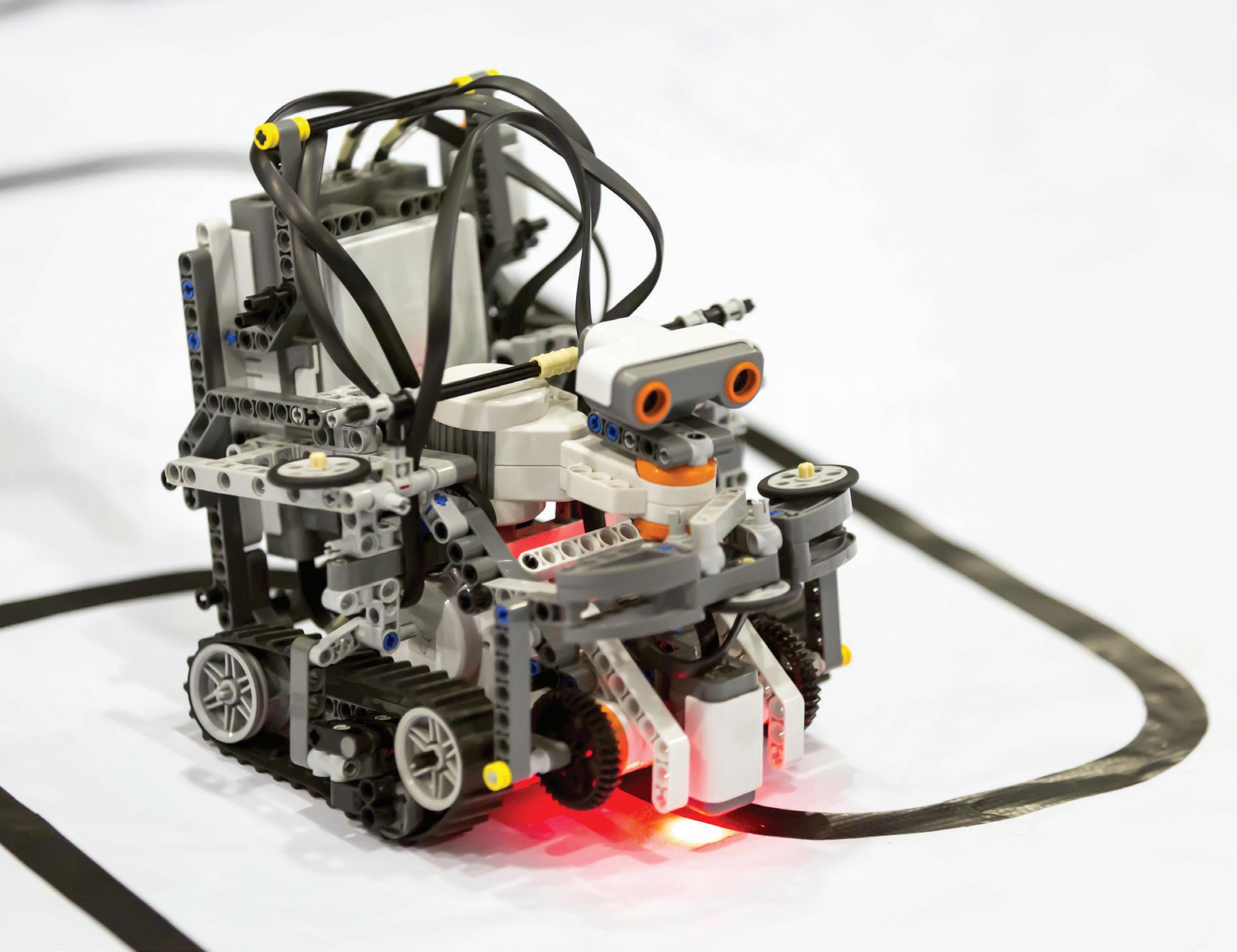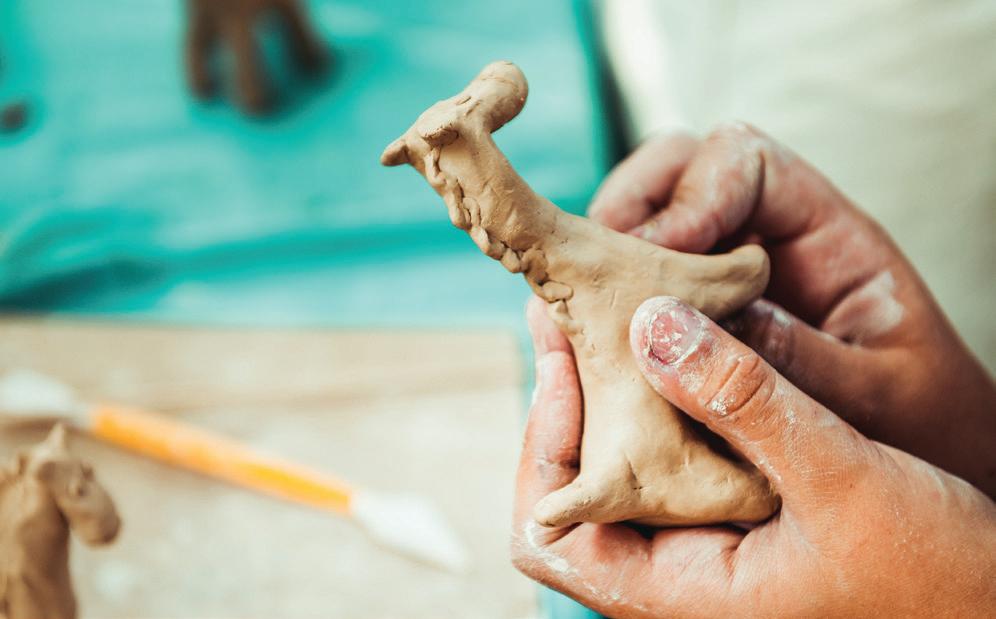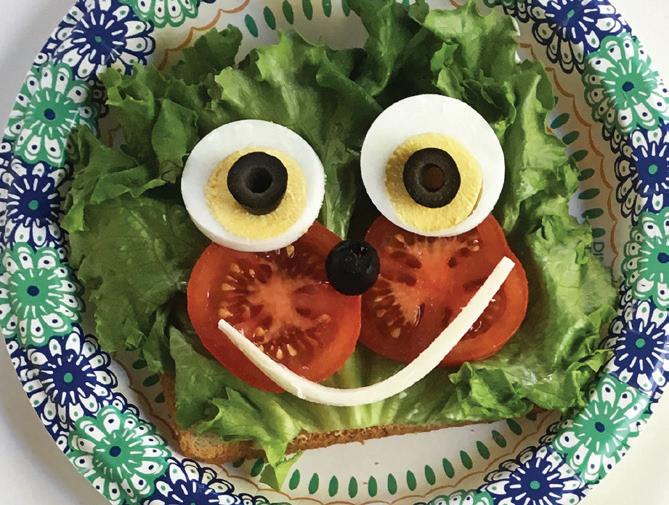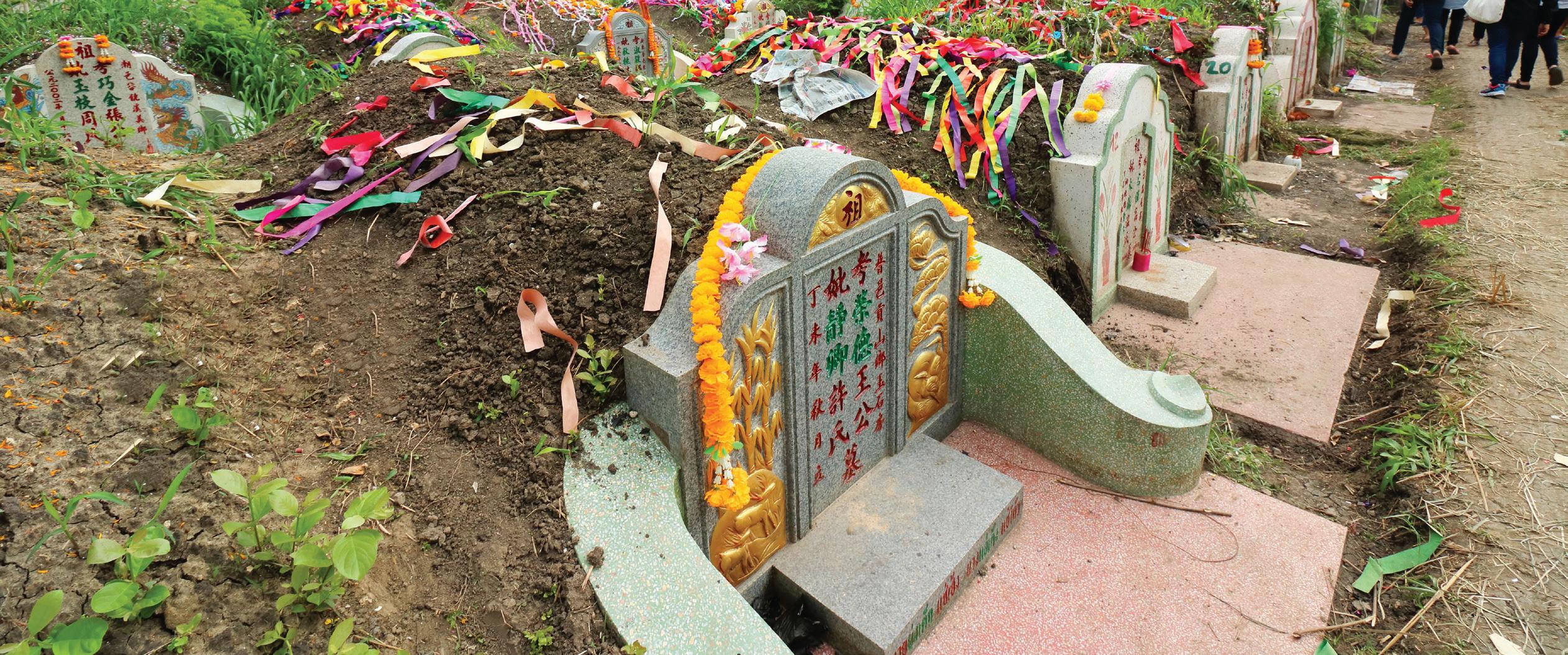
33 minute read
Building Up STEAM
BUILDING UP
35 Easy Ideas to Try at Home
Advertisement

By Janeen Lewis
STEAM (Science, Technology Engineering, Arts and Math) has grown in popularity in recent years as a way to educate children for the 21st century. STEAM programs have been adopted in many schools, and the future will include STEAM-related jobs. Foster a love of STEAM at home with these fun, active and easy ideas.
SCIENCE
Children are naturally inquisitive, and curiosity is the backbone of science discovery. Here are some easy ways to inspire kids to dive into science. • Give children a scientific start. Use scientific words and make exploring a part of everyday life. • Welcome questions such as “Why is the sky blue?” Questioning is the first step of the scientific method. • Encourage household problem-solving. Bread dough that doesn’t rise, an inside door that sticks in winter, or an insect infestation in the garden are gateways to hypotheses, experiments, and answers.



PHOTOSYNTHIESIS
•Create a kitchen science lab with common ingredients. Make homemade ice cream in a Ziploc bag, make butter out of heavy cream in a mason jar, or grow geodes in eggshells. • Have a blast—literally! Many safe experiments involve things that erupt. Make a papier mâché baking soda and vinegar volcano. Go outside and drop a pack of Mentos in a 2-liter soda or launch a bottle rocket. Discuss the science behind the blast. • Grow a garden. Start seedlings from kitchen vegetable seeds or trimmings. • Relate science to hobbies. Learn the physics behind the fastball or discuss how a gymnast balances on a beam. Most parents set screen-time boundaries. But kids love devices, and future jobs will require skills in technology. Embrace screen benefits that build technology skills. • Make the computer your friend. Teach your child how to do research, make brochures for school projects, and use spreadsheets for chores and allowance. When you take a family trip, let your child research places to visit. • Start coding early. Check out code.org for fun ways kids can code online or without technology. Other coding sites to try are Codeacademy, Kodable, Lightbot, Scratch, and Tynker.
Introduce Raspberry Pi. Kids can use this card-sized single-board computer for basic programming.


CODING




•Let them make a stop-motion video. Apps to try: Lego Movie Maker, Stop Motion Studio, Lapse It, iStopMotion, and Clayframes. • Use digital tools to help with schoolwork. Try Dictionary. com, Thesaurus.com, and khanacademy.com. Explore study aid apps such as Tinycards, and use apps myHomework and My GradeBook.



LIVE ACTION VIDEO



ENGINEERING
Does your child love Lego blocks or Minecraft? Does she want to take apart the toaster or fix the cell phone when it breaks? Here are some ways to encourage a budding engineer. • Teach kids the Engineering Design Process. Check out a kid-friendly version at teachengineering.com. • Let them join a Lego robotics club. • Keep building supplies on hand. Try Legos, wooden blocks, K’nex, Lincoln Logs, Tinker Toys, and Duplo bricks. Also keep recyclables like cardboard, paper towel tubes, and cereal boxes. There are even edible options like cheese, grapes, and marshmallows. Pair one of these with toothpicks or pretzels for building. • Encourage children to complete tower-building challenges. One fun and easy way to do this is with notecards or old playing cards and no other materials. Kids can only fold the cards—no ripping or cutting.
Continued on page 8

•Create catapults. Some materials to try: popsicle sticks, spoons, drink lids, rubber bands, and pom poms. • Build a Rube Goldberg Machine™ out of household materials. This machine is intentionally designed to perform a simple task through a series of complex chain reactions. To learn more, visit rubegoldberg.com. • Join a radio control club. Planes, helicopters, and boats often inspire children. Building their own involves creativity and problem-solving skills. • Build a miniature roller coaster. Give your child materials such as pipe insulation, marbles, cups, and duct tape. Watch them take their creativity for a ride.
Continued on page 10

C R E AT E C ATA P U LT S . S O M E M AT E R I A L S T O T RY: P O P S I C L E S T I C K S , S P O O N S , D R I N K L I D S , R U B B E R B A N D S , AND POM POMS
rubegoldberg.com
M AC H I N E S I N T E N T I O N A L LY D E S I G N E D T O P E R F O R M S I M P L E TASKS THROUGH A SERIES OF COMPLEX CHAIN REACTIONS. Learn more about Rube and the Rube Goldberg Machine Contest. ®

FIRST ® LEGO ® League is the most accessible, guided, global robotics competition, helping students and teachers to build a better future together. The program is built around theme-based challenges to engage children aged 9 to 16 in research, problem solving, coding, and engineering. The foundation of the program is the FIRST ® Core Values, which emphasize teamwork, discovery, and innovation. Students emerge more confident, excited, and equipped with the skills they need in a changing workforce.

C H I L D R E N O F A L L AG E S E N J OY B U I L D I N G A N D PLAYING WITH RADIO-CONTROLLED CARS, PLANES, HELICOPTERS, BOATS, AND MORE!


Children can be artists by painting, drawing, sculpting, singing, playing an instrument, dancing, or writing. Take note of inclinations in these areas and foster a love of the arts. • Inspire creativity. Immerse your home in different types of art. Listen to music, collect art or art books, or check them out from the library. • Be positive. Even if you don’t think you’re good at art, try some art mediums along with your child. He or she will be more willing to try too. • Stock up on art supplies. Water colors, finger paints, crayons, colored pencils, pastels, construction paper, sketch books, and origami paper are some examples. • Experiment with evaporation art. Mix salt with water and paint. Have your child predict what will happen to the salt and water. • Borrow a how-to-draw book from the library. Step-by-step directions will give your child more confidence. • Sculpt with air-dry clay. Your child doesn’t need a pottery wheel to create with clay. After the clay dries, it can be painted. • Listen to a variety of music genres. This will open your child’s mind to different artists and styles of music. • Sign your child up for a creative-writing class. • Read poetry books.
MATH
There are many ways to make math relevant and interesting. Research shows that most children can succeed at math. • Teach number sense. Mentally work through problem-solving logic with your child. Bedtime Math: A Fun Excuse to Stay Up Late by Laura Overdeck is good for promoting math discussions. • Check out Texas Instruments’ “STEM Behind Cool Careers” (https://education.ti.com/en/activities/stem/gen-stem) for videos connecting algebra, geometry, and physics to jobs like fashion design, flying jets, and more. • Cook or bake together. Measuring, equivalent fractions, and conversions are all part of recipe building. • Try grocery-store math. Have kids weigh enough produce without going over a dollar amount, compare prices for the best buys, and stay within a weekly budget. • Measure the miles. When going on family outings, find the distance with your child. Calculate the miles and time it will take to get there and how much the gas will cost. • Assign chores and give an allowance. They’ll be asking for ice cream and movie money anyway, so why not teach practical budgeting skills in the process? v



TURN YOUR PHYSICS LESSONS ON STATES OF MATTER AND PHASE CHANGE INTO AN ICE CREAM SOCIAL WITH THIS ACTIVITY FROM STEM Behind Cool Careers.
Janeen Lewis is a writer, teacher, and mom to Andrew and Gracie. She has been published in several parenting publications across the country.

In 1989, inventor Dean Kamen founded FIRST ® with an ambitious vision: A global transformation. A world where STEM is celebrated. And a culture FIRST ® IS THE ONLY SPORT WHERE EVERY KID CAN TURN PRO A progressive series of mentor-guided, team-based robotics challenges for students aged 6-18, FIRST ® is designed to ignite curiosity and encourage exploration. A diverse community of adult coaches, mentors, educators, volunteers, sponsors, and alumni help guide, inspire, and support students as they learn. We are the world’s leading youth-serving nonprofit helping young people discover a passion for STEM and develop the skills they’ll need to succeed in today’s competitive workforce. are more interested in learning about STEM better understand how STEM is used to solve FIRST ® IS THE ONLY SPORT WHERE EVERY KID CAN TURN PRO A progressive series of mentor-guided, team-based robotics challenges for students aged 6-18, FIRST ® is designed to ignite curiosity and encourage exploration. A diverse community of adult coaches, mentors, educators, volunteers, sponsors, and alumni help guide, inspire, and support students as they learn. We are the world’s leading youth-serving nonprofit helping young people discover a passion for STEM and develop the skills they’ll need to succeed in today’s competitive workforce. are more interested in learning about STEM better understand how STEM is used to solve ARE YOU READY TO CHANGE THE WORLD? Anyone can be a part of this movement... Join or start a team in your area. Bring the FIRST experience to a classroom, school, or school district. Sponsor a team, event, or local FIRST program. Become a team mentor or coach. Volunteer at a local event. ARE YOU READY TO CHANGE THE WORLD? Anyone can be a part of this movement... ARE YOU READY TO CHANGE THE WORLD?
Join or start a team in your area. Bring the FIRST experience to a classroom, school, or school district. Sponsor a team, event, or local FIRST program. Become a team mentor or coach. Volunteer at a local event. Donate to support the mission. Visit firstinspires.org to learn more. Anyone can be a part of this movement... Join or start a team in your area. Bring the FIRST experience to a classroom, school, or school district. Sponsor a team, event, or local FIRST program. Become a team mentor or coach. Volunteer at a local event. Donate to support the mission. Visit firstinspires.org to learn more.
ARE YOU READY TO



FIRST ® , the FIRST ® logo, FIRST ® Robotics Competition, and FIRST ® Tech Challenge are trademarks of For Inspiration and Recognition of Science and Technology (FIRST). LEGO MINDSTORMS ® are registered trademarks of the LEGO Group. FIRST ® LEGO ® League and firstinspires.org 200 Bedford Street ‧ Manchester, NH 03101 ‧ USA WHERE EVERY KID CAN A progressive series of mentor-guided, team-based robotics FIRST ® is designed to ignite curiosity and encourage exploration. A diverse community of adult coaches, mentors, educators, volunteers, sponsors, and alumni help guide, inspire, and support students as they learn. leading youth-serving nonprofit helping ssion for STEM and develop the s competitive workforce. It was really empowering that I had a group of friends and mentors who were patient with me, and willing to show me how to build. I think I had been really intimidated by engineering, up CHANGE THE WORLD? Anyone can be a part of this movement... Join or start a team in your area. Bring the FIRST experience to a classroom, school, or school district. Sponsor a team, event, or local FIRST program. Become a team mentor or coach. Volunteer at a local event. Donate to support the mission. Visit firstinspires.org to learn more. FIRST ® , the FIRST ® logo, FIRST ® Robotics Competition, and FIRST ® Tech Challenge are trademarks of For Inspiration and Recognition of Science and Technology (FIRST). LEGO ® and MINDSTORMS ® are registered trademarks of the LEGO Group. FIRST ® LEGO ® League and FIRST ® LEGO ® League Jr. are jointly held trademarks of FIRST and the LEGO Group. ©2019 FIRST. All rights reserved. FI065 firstinspires.org
200 Bedford Street ‧ Manchester, NH 03101 ‧ USA
alumni help guide, inspire, and support students as they learn. leading youth-serving nonprofit helping and develop the s competitive workforce. FIRST IS OUR FUTURE: BUILT BETTER TOGETHER More than a decade of verifiable data from Brandeis University (including a rigorous five-year longitudinal study) supports what we already knew: FIRST helps students develop both selfconfidence and valuable, real-world skills that can open pathways to all types of career choices and outcomes. FIRST programs encourage students to pursue education and careers in STEM-related fields, but they also inspire kids to become leaders and innovators in any industry. where young people can proudly dream of becoming true leaders in the fields of science and technology. INSPIRES Innovation: solve problems. Impact: We apply what we’ve learned to improve our world. Inclusion: Teamwork: Fun: We enjoy and celebrate what we do! FIRST taught me things that were crucial to my future success — not just about engineering, but about life: about leadership, friendship, and personal growth. Other high school experiences simply do not match up. -Rhodes Conover, It was really empowering that I had a group of friends and mentors who were patient with me, and willing to show me how to build. I think I had been really intimidated by engineering, up alum + applications engineer COMBINING THE EXCITEMENT OF SPORT WITH THE RIGORS OF SCIENCE AND TECHNOLOGY AND THE INSPIRATION OF COMMUNITY
Donate to support the mission. Visit firstinspires.org to learn more. FIRST ® , the FIRST ® logo, FIRST ® Robotics Competition, and FIRST ® Tech Challenge are trademarks of For Inspiration and Recognition of Science and Technology (FIRST). LEGO ® and MINDSTORMS ® are registered trademarks of the LEGO Group. FIRST ® LEGO ® League and FIRST ® LEGO League Jr. are jointly held tradmarks of FIRST and the LEGO Group. ©2019 FIRST. All rights reserved. FIRST ® , the FIRST ® logo, FIRST ® Robotics Competition, and FIRST ® Tech Challenge are trademarks of For Inspiration and Recognition of Science and Technology (FIRST). LEGO ® and MINDSTORMS ® are registered trademarks of the LEGO Group. FIRST ® LEGO ® League and FIRST ® LEGO ® League Jr. are jointly held trademarks of FIRST and the LEGO Group. ©2019 FIRST. All rights reserved. FI065 firstinspires.org 200 Bedford Street ‧ Manchester, NH 03101 ‧ USA FIRST COMMITTED TO CREATING A DIVERSE, INCLUSIVE, AND EQUITABLE COMMUNITY In today’s technology-rich society, STEM literacy is required for success in nearly every career path. STEM competence builds confidence and opens doors to all kinds of career opportunities. It fosters discovery and innovation in the fastest-growing fields and builds a foundation for young people from all walks of life to achieve purposeful, prosperous lives. At FIRST students who can benefit from them the most. We’re constantly developing new strategies to create greater, more equitable access and to help every child succeed. For more on our commitment to Equity, Diversity, and Inclusion, visit
FIRST IS OUR FUTURE: BUILT BETTER TOGETHER More than a decade of verifiable data from Brandeis University (including a rigorous five-year longitudinal study) supports what we already knew: FIRST helps students develop both self- confidence and valuable, real-world skills that can open path- ways to all types of career choices and outcomes. FIRST programs encourage students to pursue education and careers in STEM-related fields, but they also inspire kids to become leaders and innovators in any industry.
In 1989, inventor Dean Kamen founded with an ambitious vision: A global transformation. A world where STEM is celebrated. And a culture where young people can proudly dream of becoming true leaders in the fields of science and technology. FIRST IS BUILDING GLOBAL CITIZENS FIRST Core Values emphasize friendly sportsmanship, respect for the contributions of others, teamwork, learning, and community involvement: Discovery: We explore new skills and ideas. Innovation: We use creativity and persistence to solve problems. Impact: We apply what we’ve learned to improve our world. Inclusion: We respect each other and embrace our differences. Teamwork: We are stronger when we work together. Fun: We enjoy and celebrate what we do! FIRST taught me things that were crucial to my future success — not just about engineering, but about life: about leadership, friendship, and personal growth. Other high school experiences simply do not match up. -Rhodes Conover, FIRST alum + engineering student It was really empowering that I had a group of friends and mentors who were patient with me, and willing to show me how to build. I think I had been really intimidated by engineering, up until that point. -Cassie Hudson, FIRST alum + applications engineer COMBINING THE EXCITEMENT OF SPORT WITH THE RIGORS OF SCIENCE AND TECHNOLOGY AND THE INSPIRATION OF COMMUNITY When I joined the team, I wasn’t what you would describe as a “model student.” But FIRST was especially my mentors got me to change my overall outlook on life... I learned how to be a team player FIRST ® , the FIRST ® logo, FIRST ® Robotics Competition, and FIRST ® Tech Challenge are trademarks of For Inspiration and Recognition of Science and Technology (FIRST). LEGO ® and MINDSTORMS ® are registered trademarks of the LEGO Group. FIRST ® LEGO ® League and FIRST ® LEGO ® League Jr. are jointly held trademarks of FIRST and the LEGO Group. ©2019 FIRST. All rights reserved. FI065 firstinspires.org 200 Bedford Street ‧ Manchester, NH 03101 ‧ USA FIRST COMMITTED TO CREATING A DIVERSE, INCLUSIVE, AND EQUITABLE COMMUNITY In today’s technology-rich society, STEM literacy is required for success in nearly every career path. STEM competence builds confidence and opens doors to all kinds of career opportunities. It fosters discovery and innovation in the fastest-growing fields and builds a foundation for young people from all walks of life to achieve purposeful, prosperous lives. At FIRST students who can benefit from them the most. We’re constantly developing new strategies to create greater, more equitable access and to help every child succeed. For more on our commitment to Equity, Diversity, and Inclusion, visit
FIRST IS OUR FUTURE: BUILT BETTER TOGETHER More than a decade of verifiable data from Brandeis University (including a rigorous five-year longitudinal study) supports what we already knew: FIRST helps students develop both self- confidence and valuable, real-world skills that can open path- ways to all types of career choices and outcomes. FIRST programs encourage students to pursue education and careers in STEM-related fields, but they also inspire kids to become leaders and innovators in any industry.
In 1989, inventor Dean Kamen founded with an ambitious vision: A global transformation. A world where STEM is celebrated. And a culture where young people can proudly dream of becoming true leaders in the fields of science and technology. FIRST IS BUILDING GLOBAL CITIZENS FIRST Core Values emphasize friendly sportsmanship, respect for the contributions of others, teamwork, learning, and community involvement: Discovery: We explore new skills and ideas. Innovation: We use creativity and persistence to solve problems. Impact: We apply what we’ve learned to improve our world. Inclusion: We respect each other and embrace our differences. Teamwork: We are stronger when we work together. Fun: We enjoy and celebrate what we do! FIRST taught me things that were crucial to my future success — not just about engineering, but about life: about leadership, friendship, and personal growth. Other high school experiences simply do not match up. -Rhodes Conover, FIRST alum + engineering student It was really empowering that I had a group of friends and mentors who were patient with me, and willing to show me how to build. I think I had been really intimidated by engineering, up until that point. -Cassie Hudson, FIRST alum + applications engineer COMBINING THE EXCITEMENT OF SPORT WITH THE RIGORS OF SCIENCE AND TECHNOLOGY AND THE INSPIRATION OF COMMUNITY When I joined the team, I wasn’t what you would describe as a “model student.” But FIRST was especially my mentors got me to change my overall outlook on life... I learned how to be a team player ® , the FIRST ® logo, FIRST ® Robotics Competition, and FIRST ® Tech Challenge are trademarks of For Inspiration and Recognition of Science and Technology (FIRST). LEGO ® and MINDSTORMS ® are registered trademarks of the LEGO Group. FIRST ® LEGO ® League and ® LEGO ® League Jr. are jointly held trademarks of FIRST and the LEGO Group. ©2019 FIRST. All rights reserved. FI065 firstinspires.org 200 Bedford Street ‧ Manchester, NH 03101 ‧ USA BUILT BETTER TOGETHER More than a decade of verifiable data from Brandeis University (including a rigorous five-year longitudinal study) supports what we already knew: FIRST helps students develop both self- confidence and valuable, real-world skills that can open path ways to all types of career choices and outcomes. FIRST programs encourage students to pursue education and careers in STEM-related fields, but they also inspire kids to become leaders and innovators in any industry. INSPIRES COMBINING THE EXCITEMENT OF SPORT WITH THE RIGORS OF SCIENCE AND TECHNOLOGY AND THE INSPIRATION OF COMMUNITY Donate to support the mission. Visit firstinspires.org to learn more.
ARE YOU READY TO CHANGE THE WORLD? Anyone can be a part of this movement... Join or start a team in your area. Bring the FIRST experience to a classroom, school, or school district. Sponsor a team, event, or local FIRST program. Become a team mentor or coach. Volunteer at a local event. Donate to support the mission. Visit firstinspires.org to learn more.


AGES 6-10 It’s never too early to discover STEM AGES 9-16 Young innovators using skills and imagination to solve problems as a team AGES 6-10 It’s never too early to discover STEM AGES 9-16 Young innovators using skills and imagination to solve problems as a team AGES 6-10 It’s never too early to discover STEM AGES 9-16 Young innovators using skills and imagination to solve problems as a team AGES 6-10 It’s never too early to discover STEM AGES 12-18 It’s way more than building robots AGES 9-16 Young innovators using skills and imagination to solve problems as a team AGES 6-10 It’s never too early to discover STEM It’s way more than AGES 9-16 Young innovators using skills and imagination to solve problems as a team
THE CHALLENGE: THE CHALLENGE:
THE CHALLENGE: Teams of children explore scientific concepts through a real-world theme. Kids then work together to build a model and, with LEGO ® Education WeDo 2.0, code it to make it move. THE CHALLENGE: Teams collaborate to design, build, code, and test LEGO ® MINDSTORMS ® robots for autonomous missions on a themed, table-top playing field. Each team works together to solve a real-world problem. THE CHALLENGE: Teams of children explore scientific concepts through a real-world theme. Kids then work together to build a model and, with LEGO ® Education WeDo 2.0, code it to make it move. THE CHALLENGE: Teams collaborate to design, build, code, and test LEGO ® MINDSTORMS ® robots for autonomous missions on a themed, table-top playing field. Each team works together to solve a real-world problem. Teams of children explore scientific concepts through a real-world theme. Kids then work together to build a model and, with LEGO ® Education WeDo 2.0, code it to make it move. Teams collaborate to design, build, code, and test LEGO ® MINDSTORMS ® robots for autonomous missions on a themed, table-top playing field. Each team works together to solve a real-world problem. THE CHALLENGE: Teams of children explore scientific concepts through a real-world theme. Kids then work together to build a model and, with LEGO ® Education WeDo 2.0, code it to make it move. THE CHALLENGE: Guided by adult coaches and mentors, small teams of students design, build, code, and operate Android smartphone-controlled robots to compete in an alliance format. Students are encouraged to create team brands and reach out to their communities. THE CHALLENGE: Teams collaborate to design, build, code, and test LEGO ® MINDSTORMS ® robots for autonomous missions on a themed, table-top playing field. Each team works together to solve a real-world problem. THE CHALLENGE: Teams of children explore scientific concepts through a real-world theme. Kids then work together to build a model and, with LEGO ® Education WeDo 2.0, code it to make it move. Guided by adult coaches and mentors, small teams of students design, build, code, and operate Android smartphone-controlled robots to compete in an alliance format. Students are encouraged to create team brands and reach out to their communities. THE CHALLENGE: Teams collaborate to design, build, code, and test LEGO ® MINDSTORMS ® robots for autonomous missions on a themed, table-top playing field. Each team works together to solve a real-world problem.
THE JOURNEY: THE JOURNEY: THE JOURNEY: THE JOURNEY: THE JOURNEY:
THE JOURNEY: Each team documents its work in an Engineering Notebook and creates a Show Me poster to chronicle its research journey. In a season-culminating Expo, teams celebrate what they’ve learned and created together. THE OUTCOME: Through their own research, critical thinking, and imagination, young children develop an early interest in STEM, learn to work together as a team to achieve a common goal, and have a ton of fun. THE JOURNEY: Each season culminates in a series of regional tournaments and championships, where teams compete with their robots and share what they’ve learned and invented.
THE OUTCOME: Using STEM concepts, students overcome the same challenges that face scientists today. They develop critical-thinking and presentation skills, build selfconfidence in STEM, and have fun while working as part of a team. THE JOURNEY: Each team documents its work in an Engineering Notebook and creates a Show Me poster to chronicle its research journey. In a season-culminating Expo, teams celebrate what they’ve learned and created together. THE OUTCOME: Through their own research, critical thinking, and imagination, young children develop an early interest in STEM, learn to work together as a team to achieve a common goal, and have a ton of fun. THE JOURNEY: Each season culminates in a series of regional tournaments and championships, where teams compete with their robots and share what they’ve learned and invented.
THE OUTCOME: Using STEM concepts, students overcome the same challenges that face scientists today. They develop critical-thinking and presentation skills, build selfconfidence in STEM, and have fun while working as part of a team. THE JOURNEY: Each team documents its work in an Engineering Notebook and creates a Show Me poster to chronicle its research journey. In a season-culminating Expo, teams celebrate what they’ve learned and created together. THE OUTCOME: Through their own research, critical thinking, and imagination, young children develop an early interest in STEM, learn to work together as a team to achieve a common goal, and have a ton of fun. THE JOURNEY: Each season culminates in a series of regional tournaments and championships, where teams compete with their robots and share what they’ve learned and invented.
THE OUTCOME: Using STEM concepts, students overcome the same challenges that face scientists today. They develop critical-thinking and presentation skills, build selfconfidence in STEM, and have fun while working as part of a team. Each team documents its work in an Engineering Notebook and creates a Show Me poster to chronicle its research journey. In a season-culminating Expo, teams celebrate what they’ve learned and created together. THE OUTCOME: Through their own research, critical thinking, and imagination, young children develop an early interest in STEM, learn to work together as a team to achieve a common goal, and have a ton of fun. Teams compete at local and regional events, building up to the FIRST Championship. They earn awards based on their teamwork, creativity, innovation, and the engineering design process.
THE OUTCOME: While developing their STEM skills and mastering basic engineering principles, students learn the value of persistence, innovation, and teamwork. High school students are eligible to apply for more than $80 million in scholarships from colleges, universities, and technical programs. Each season culminates in a series of regional tournaments and championships, where teams compete with their robots and share what they’ve learned and invented.
THE OUTCOME: Using STEM concepts, students overcome the same challenges that face scientists today. They develop critical-thinking and presentation skills, build selfconfidence in STEM, and have fun while working as part of a team. Each team documents its work in an Engineering Notebook and creates a Show Me poster to chronicle its research journey. In a season-culminating Expo, teams celebrate what they’ve learned and created together. THE OUTCOME: Through their own research, critical thinking, and imagination, young children develop an early interest in STEM, learn to work together as a team to achieve a common goal, and have a ton of fun. Teams compete at local and regional events, building up to the based on their teamwork, creativity, innovation, and the engineering design process. While developing their STEM skills and mastering basic engineering principles, students learn the value of persistence, innovation, and teamwork. High school students are eligible to apply for more than $80 million in scholarships from colleges, universities, and technical programs. Each season culminates in a series of regional tournaments and championships, where teams compete with their robots and share what they’ve learned and invented.
THE OUTCOME: Using STEM concepts, students overcome the same challenges that face scientists today. They develop critical-thinking and presentation skills, build selfconfidence in STEM, and have fun while working as part of a team.


AGES 12-18 It’s way more than building robots AGES 14-18 An exciting sport built around the world of STEM AGES 12-18 It’s way more than building robots AGES 14-18 An exciting sport built around the world of STEM AGES 12-18 It’s way more than building robots AGES 14-18 An exciting sport built around the world of STEM AGES 12-18 It’s way more than building robots Young innovators using skills and imagination to solve problems as a team AGES 14-18 An exciting sport built around the world of STEM AGES 12-18 It’s way more than building robots AGES 9-16 Young innovators using skills and imagination to solve problems as a team AGES 14-18 An exciting sport built around the world of STEM
THE CHALLENGE: THE CHALLENGE:
THE CHALLENGE: Guided by adult coaches and mentors, small teams of students design, build, code, and operate Android smartphone-controlled robots to compete in an alliance format. Students are encouraged to create team brands and reach out to their communities. THE JOURNEY: Teams compete at local and regional events, building up to the FIRST Championship. They earn awards based on their teamwork, creativity, innovation, and the engineering design process. THE CHALLENGE: Under strict rules, with limited time and resources, high school teams use sophisticated technology to build and code industrial-size robots for a challenging field game. Each team develops a brand, raises funds to meet its goals, and works to promote STEM in the local community.
THE JOURNEY: At district and regional events, cheering crowds root for qualifying teams as students compete with their robots for prestigious awards and a coveted spot at the FIRST Championship. THE CHALLENGE: Guided by adult coaches and mentors, small teams of students design, build, code, and operate Android smartphone-controlled robots to compete in an alliance format. Students are encouraged to create team brands and reach out to their communities. THE JOURNEY: Teams compete at local and regional events, building up to the FIRST Championship. They earn awards based on their teamwork, creativity, innovation, and the engineering design process. THE CHALLENGE: Under strict rules, with limited time and resources, high school teams use sophisticated technology to build and code industrial-size robots for a challenging field game. Each team develops a brand, raises funds to meet its goals, and works to promote STEM in the local community.
THE JOURNEY: At district and regional events, cheering crowds root for qualifying teams as students compete with their robots for prestigious awards and a coveted spot at the FIRST Championship. Guided by adult coaches and mentors, small teams of students design, build, code, and operate Android smartphone-controlled robots to compete in an alliance format. Students are encouraged to create team brands and reach out to their communities. THE JOURNEY: Teams compete at local and regional events, building up to the FIRST Championship. They earn awards based on their teamwork, creativity, innovation, and the engineering design process. Under strict rules, with limited time and resources, high school teams use sophisticated technology to build and code industrial-size robots for a challenging field game. Each team develops a brand, raises funds to meet its goals, and works to promote STEM in the local community.
THE JOURNEY: At district and regional events, cheering crowds root for qualifying teams as students compete with their robots for prestigious awards and a coveted spot at the FIRST Championship. THE CHALLENGE: Guided by adult coaches and mentors, small teams of students design, build, code, and operate Android smartphone-controlled robots to compete in an alliance format. Students are encouraged to create team brands and reach out to their communities. THE JOURNEY: Teams compete at local and regional events, building up to the FIRST Championship. They earn awards based on their teamwork, creativity, innovation, and the engineering design process.
THE OUTCOME: While developing their STEM skills and mastering basic engineering principles, students learn the Teams collaborate to design, build, code, and test robots for autonomous missions on a themed, table-top playing field. Each team works together to solve a real-world problem. Each season culminates in a series of regional tournaments and championships, where teams compete with their robots and share what they’ve Using STEM concepts, students overcome the same challenges that face scientists today. They develop THE CHALLENGE: Under strict rules, with limited time and resources, high school teams use sophisticated technology to build and code industrial-size robots for a challenging field game. Each team develops a brand, raises funds to meet its goals, and works to promote STEM in the local community.
THE JOURNEY: At district and regional events, cheering crowds root for qualifying teams as students compete with their robots for prestigious awards and a coveted spot at the FIRST Championship.
THE OUTCOME: As students learn real-world engineering concepts, they build their confidence and workforce skills, THE CHALLENGE: Guided by adult coaches and mentors, small teams of students design, build, code, and operate Android smartphone-controlled robots to compete in an alliance format. Students are encouraged to create team brands and reach out to their communities. THE JOURNEY: Teams compete at local and regional events, building up to the FIRST Championship. They earn awards based on their teamwork, creativity, innovation, and the engineering design process.
THE OUTCOME: While developing their STEM skills and mastering basic engineering principles, students learn the THE CHALLENGE: Teams collaborate to design, build, code, and test MINDSTORMS ® robots for autonomous missions on a themed, table-top playing field. Each team works together to solve a real-world problem. THE JOURNEY: Each season culminates in a series of regional tournaments and championships, where teams compete with their robots and share what they’ve learned and invented.
THE OUTCOME: Using STEM concepts, students overcome the same challenges that face scientists today. They develop THE CHALLENGE: Under strict rules, with limited time and resources, high school teams use sophisticated technology to build and code industrial-size robots for a challenging field game. Each team develops a brand, raises funds to meet its goals, and works to promote STEM in the local community.
THE JOURNEY: At district and regional events, cheering crowds root for qualifying teams as students compete with their robots for prestigious awards and a coveted spot at the FIRST Championship.
THE OUTCOME: As students learn real-world engineering concepts, they build their confidence and workforce skills,
THE OUTCOME: While developing their STEM skills and mastering basic engineering principles, students learn the value of persistence, innovation, and teamwork. High school students are eligible to apply for more than $80 million in scholarships from colleges, universities, and technical programs. THE OUTCOME: As students learn real-world engineering concepts, they build their confidence and workforce skills, and connect with professional team mentors and sponsors who can help them succeed. Plus, they can apply for more than $80 million in college, university, and technical program scholarships. THE OUTCOME: While developing their STEM skills and mastering basic engineering principles, students learn the value of persistence, innovation, and teamwork. High school students are eligible to apply for more than $80 million in scholarships from colleges, universities, and technical programs. THE OUTCOME: As students learn real-world engineering concepts, they build their confidence and workforce skills, and connect with professional team mentors and sponsors who can help them succeed. Plus, they can apply for more than $80 million in college, university, and technical program scholarships. THE OUTCOME: While developing their STEM skills and mastering basic engineering principles, students learn the value of persistence, innovation, and teamwork. High school students are eligible to apply for more than $80 million in scholarships from colleges, universities, and technical programs. THE OUTCOME: As students learn real-world engineering concepts, they build their confidence and workforce skills, and connect with professional team mentors and sponsors who can help them succeed. Plus, they can apply for more than $80 million in college, university, and technical program scholarships. value of persistence, innovation, and teamwork. High school students are eligible to apply for more than $80 million in scholarships from colleges, universities, and technical programs. critical-thinking and presentation skills, build selfconfidence in STEM, and have fun while working as and connect with professional team mentors and sponsors who can help them succeed. Plus, they can apply for more than $80 million in college, university, and technical program scholarships. value of persistence, innovation, and teamwork. High school students are eligible to apply for more than $80 million in scholarships from colleges, universities, and technical programs. critical-thinking and presentation skills, build selfconfidence in STEM, and have fun while working as and connect with professional team mentors and sponsors who can help them succeed. Plus, they can apply for more than $80 million in college, university, and technical program scholarships.










